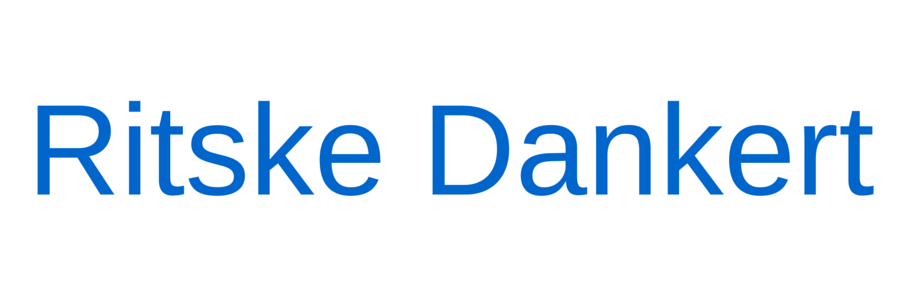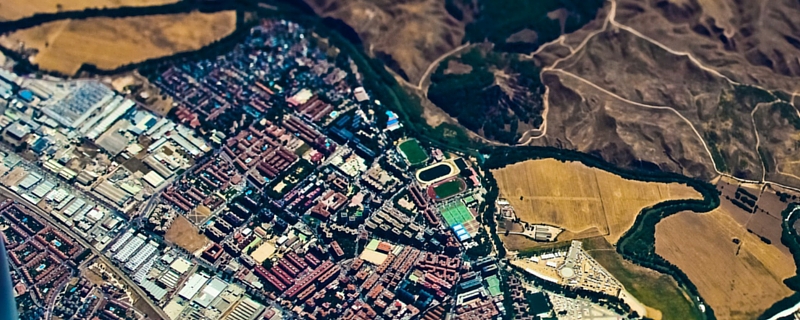Actor-Network Theory (ANT) is rooted in science and technology studies. As a method for doing in-depth research it has now been used in other areas of science as well. ANT does focus on the connections that are being made and remade between human and non-human entities that are part of the issue at stake. It goes beyond the borders that are usually set: ANT does not stop the investigation when it enters contexts or so called ‘underlying structures’. Tracing back connections can be done by (participatory) observation, document analysis or in-depth interviews.
Introduction
Actor-Network Theory (ANT) is rooted in science and technology studies. It has been developed from the 1980s by Bruno Latour, Michel Callon and John Law. Since the 1980s ANT has been used in multiple variations. Although ANT carries ‘theory’ in its name, it is better looked at as a method for doing research. Still ANT does carry some substantive elements in it that cannot be neglected when doing ANT driven research.
In short, ANT can be defined as a research method with a focus on the connections between both human and non-human entities. It describes how these connections lead to the creation of new entities that do not necessarily practice the sum of characteristics of constituent entities. This can be compared to what happens if a chemist puts together two chemicals. Another example of such fusion of entities into another entity is the gunman example that was introduced by Latour in Pandora’s Hope. Here it is stated that a man and a gun can form a new entity when they are connected in a third entity: the gunman. In spite of what has been argued by the American pro-gun lobby a man can not shoot someone all by himself. However, it cannot be said either that the gun is the cause of all problems. Guns that shoot someone all by themselves are quit rare. The connection that ANT wants researcher to focus on is the connection that brings the man and the gun together, and thus creates a gunman. A gunman is different from both a man and a gun in the sense that a gunman is able to shoot someone whereas both the man and the gun cannot do this alone. This example also shows that ANT driven research can come up with unexpected conclusions. From this example we could conclude that war is caused by neither man nor guns. It is the connection between the two entities that we have to blame for all the cruel incidents that happen with it every day. If we would be able to break down the connections between men and guns the existence of both man and guns would not be a problem anymore.
The focus on connections shows ANT is a constructivist theory. Although the word actor suggests that the method is about networks of people, this is not the case. As we have seen from the example of the gunman an actor can also be non-human. In this case the actor gun is part of the actor-network gunman. As we shall see in the next section of this chapter, the word actant would therefore be more appropriate.
During fieldwork connections between humans and non-humans can be traced. Only traceable connections from the empirical data will be part off the description that is made by the ANT researcher. This description reveals the connections that lead to the creation of a certain entity. For instance a gunman. ANT also wants to focus on how connections were established. This can only be revealed through fieldwork, because it can be done differently every single time.
For ANT existence is first, essence is second. The gunman from our example only is a gunman after the constituent elements were connected. Therefore ANT does not search for essences, but rather for the connecting and reconnecting of entities that shape and reshape the essences of a certain entity. Understanding what this really means requires us to first go into the way ANT understands the concept of truth. In philosophy there is a divide between modernist and postmodernist thinking about the definition of truth. ANT rejects both modernist and postmodernist thinking. Modernist philosophers believe that truth is something that is out there independent from humans. It only has to be discovered by scientist. Postmodernist philosophers do not believe in the concept of truth at all, or they think that every individual can create his own truth. For ANT truth should be understand as a state of affairs that cannot be denied in a practical sense. In modern Western societies, for example, the statement that people don’t need houses would thus be regarded as not true. For ANT truth does exist, but it can change over time. That is: essences can change. When we keep in mind this conception of truth, it is logical that ANT does not want to focus on truth or essences themselves. Rather should be focussed on the forces that shape and reshape the true essences the researcher faces when doing fieldwork.
In the following section we will first go into some basic terms of ANT. After that the chapter will show how ANT can be done in practice. Also some examples will be given. The chapter will conclude with some consideration on when ANT should be used, and when not.
Basics of ANT
In this section I will introduce the most important terms ANT works with. First I will go into the formation of sociotechnical groups of entities. Then this paragraph will go into actants with agency. The difference between objects and things, that is central to ANT, will be discussed. After that I will go into the notion of actor-networks and the translations by which these actor-networks are made and remade.
Group formation
Research in housing often starts with groups: the department, the home-owners, the housing association, and so on. Even a thing like a home could be regarded as a group of other entities. As we have seen already, the same it true for the gunman. These are al groups of human and non-human entities such as employees, building materials and computers. These groups are mostly taken for granted. Following constructivism, in ANT these groups are to be deconstructed in order to see what is going on inside of them. Then it becomes clear that every single entity is in fact a group of other entities. For example, when we would unravel the group ‘home’, we would see a lot of building materials, paperworks and efforts of builders, architects and others.
For ANT, the point is that groups are not stable. They are, or at least can be, remade over and over again. However, if you stop making and remaking groups, you stop having groups. Al kinds of groups, whether it is a department or a home, need to be remade every single day in order to keep alive. When the employees do not go to work anymore the department does not exist anymore. When the walls of house fall down, the house does not exist anymore. ANT driven research wants to show the dynamics of the making and remaking of groups. Therefore every time again we have to wonder how groups have been formed by the actors involved.
Actants with agency
Above we have used the word actor. Actors form groups that ANT calls actor-networks. However, although it’s in its name, ANT does not use the word actor in its regular meaning. The word actant would be more appropriate. An actant is that which accomplishes or undergoes an act. They differ from actors because an actant can not only be a human, but also an animal, object or concept that accomplishes or undergoes an act. Through the use of the word actant humans, animals, objects and concepts are treated equally in an analytical sense. ANT does not deny that there can be huge differences between different actants. However, if this is the case, the researcher should find evidence for this during the fieldwork.
ANT agrees on mainstream sociology when it states that actors have the power to change other actors. This power is called agency. When we act we always interact with others. As John Law has stated: “interaction is all that there is.” During these interactions we change other actants. At the same time, however, we are being changed by other actants. ANT points out that not only humans, but also non-human entities are influencing us constantly. Some people ‘have to’ watch when a television screen in their surrounding is turned on, and a computer that crashes from time to time can make you really desperate. On the other hand, people influence televisions by turning them off. And the system administrator can help to fix a computer. For buildings this also counts. Humans first shape buildings and then are being shaped by the same buildings. For example, through the sick building syndrome buildings practice agency to influence humans.
The difference between objects and things
The fact that ANT does not make an analytical distinction between humans and non-humans is sometimes regarded as weird or even as faulty. Sometimes these critics are bases on an incorrect view of how ANT deals with humans and non-humans. The differences between humans and nonhumans are not neglected, but have no a-priori relevance for ANT driven studies. If we look into the argument in more detail we will see that it is possible to make this statement. Therefore we have to distinguish between objects and things. To most people an object is something that is stable. It does not change. Examples are a chair or a computer. However, things is a more abstract term. It can also point at something that is not as stable as an object in the traditional definition. ANT does see objects as things that are the temporary result of a set of connections. As long as these connections hold, the object has the same essence. It is not changed by others, and it does not change others either.
Networks
By using the word actant, we have shifted the focus a little towards the actions rather that the entity that is the source of this action. The word network then focuses on the outcomes of these actions. When two or more actants are connected, they form an actant-network. For ANT a network is always an actant-network. In a sense actant-network is similar to actant. If we zoom out till we cannot see the connections of an actant-network anymore, the actant-network will appear as one actant. The other way around: if we zoom in on any actant, we will be able to trace connections and thus see the actant-network. For example if we watch a movie on the television, it appears to us as one actant. However if the television breaks down and we have to open it, only then we see that it is also an actant-network that consists of a lot of materials and work of assembling. Actant-networks are thus constructed and reconstructed through interaction between actants. As long as the actants keep interacting the actant-network will look stable from the outside. The connections between their constituting actants will hold. However, if the interaction ends, the actant-network will break down. For ANT, no network is stable without the ongoing interactions between actants.
Translation
In the last paragraph we have seen that interaction between actants is necessary to establish and hold the connections between them. In order to establish connections actants have to be displaced and transformed in order to make them fit into an actant-network. The work that is necessary to displace and transform is called translation. For ANT, translation is understood as all the negotiations, intrigues, calculations, acts of persuasion and violence through which an actant is changed. When actants have not been translated (or translate themselves), they are not part of the actant-network.
In the example of implementing housing management plans, through translation connections have to be made between visions of the alderman and the director of the housing association. And also connections between the rule of law and the floor plan. When translation is successful, the actants work together in order to change the actor-network from a plan on paper into a building of stone. However, if actants are not translated (that is displaced and transformed) there cannot be established an actant-network. In other words: if all actants stick to their original characteristics they will not be able to connect to each other in such way that a new actant-network with other characteristics is created. Change can be present in many forms. When an architect changes his drawings, he has also become a different architect. And if the housing association agrees to a suggestion of the architect, the housing association has become a different constituent.
Immutable mobiles
Interaction is like a flow: something flows from one actor-network to another. ANT driven research wants to track these flows. To let something flow from one actant-network to another, it has to put into a form. An example of this can be information. When we want to flow information from the desk of a researcher to the meeting of the management team at a company where important decision are made, we have to put the information into a form that can be understand by the managers. Usually scientists do so by writing a popular version of their reports. In that case, the report would function as an ‘immutable mobile’ as it is able to let the information flow from one actant-network to another.
Doing ANT
In the last paragraph we have looked into the most important terms of the ANT method. When we actually want to do ANT driven research, this knowledge is vital, but not enough. In this section we go into the steps that have to be taken when doing ANT driven research.
After the research question has been set, and ANT has been picked to be the research method, the first step is to choose a starting point. That is, to choose the actant from where the research departs. There is not much to guide this choice. For ANT, there is no best or worst choice. Theories and other presumptions are to be avoided at this stage in order to make sure that the full range of involved entities can be explored without the researcher being biased. So these cannot help either to choose the starting point. The only guide to choose the starting point is the theme, central question and goal of the research. For example in a research on the implementation of a policy, the policy document could be such starting point.
Starting from the chosen actant, the research then begins by exploring and unravelling this actant and the human and non-human actants that relate to it. In this exploration it is important to ‘hear’ the actants involved. This is usually done through interviews and the analysis of documents. When it is possible direct observations or diary keeping by the human actants involved could be added to these methods. In order to get the full picture there are three requirements ANT driven research should meet. In the first place it should be acknowledged that ANT is a boundaryless and holistic approach. That means that context as such does not exist. The division between the direct surroundings of an actant and its context has to be overcome. Instead ANT creates a new divide. That between actants that leave traces and actants that do not leave traces. For ANT only actants that leave traces really exist and are therefore part of the data. The second requirement of ANT is that the actants that leave traces should be regarded in the same way. For example new regulations from the central government that affect a building project can be analysed in the same way as a group of tenants that have influence on a building project. Although their substance differs, they can be described through the same kind of vocabulary. The last requirement that has to be met during fieldwork is an emphasize on connections. It should be made clear how the regulation from the central government connects to a specific building project, and what the effect of this connection is. An example of such connection is an inspector from the government should give permission based on the regulations for a project.
After the fieldwork, a new phase starts. From the rich data that has been produced it is hard to choose what is useful to the research and what is not. To do this the researcher must make clear what the goal of the research is. Is it to tell the story? Then almost all data could be used and there will be no concluding chapter. However if the goal is to develop a model, to learn something from the research or to make recommendations, not all data will be useful. There has to be a selection based on the issues that the research wants to focus on. This focus should of course be introduced and substantiated. In these cases it also becomes important to go into the existing literature on the subject. Only then the researcher can show how ANT driven results connect with the existing knowledge.
Examples of ANT driven research
The use of ANT in housing research has been rather scare. However, if we broaden the scope and also look into related fields some interesting examples of ANT driven research can be found.
An example that is close to organization and institutional studies is the work of Barbara Czarniawska. Her research could also be of interest for researches on the institutions in housing and home. As Czarniawska points out, standard analysis on organizations begin with actors or organizations. However, following ANT, actors or organizations are not the sources, but the output of ongoing organizing. For research on organisations this means that the employees have to be followed. That is: they have to be followed in a very literal sense over a period of some day or less literal through interviews or diary keeping over a longer period. In such research from the subject is approached through the eyes of the employees taken into the study.
In my own research on the implementation of housing management strategy I take a measure from such strategy as the starting point to follow a project over a period of ten years. Through multiple case studies at housing associations, it appears that a measure from their strategies changes over time. When everything goes according to the plan, a measure eventually will turn into a new or renovated building. Along the way measures changes into floor plans, building permissions and building materials. Because the measures that are followed in this research cannot talk, I use document analysis and interviews with human actants involved in the project to gather the data.
A third example of ANT driven research has been carried out by Bruno Latour. In his book on Aramis – a metro system that was meant to be implemented in Paris but never succeeded – Latour gives Aramis himself a voice. This makes the book almost a novel. Although not much researcher would cite things in this way, Aramis is a powerful example of how ANT driven research can be practiced. Through document analysis and interviews with all human actants involved in the project, Latour tries to trace back the causes of the breakdown of the Aramis project. However, Aramis also shows a weakness of ANT driven research. That is that it is difficult to set unambiguous conclusions from the rich palette of data. Aramis therefore also confirms the need to bring in some theory when it comes to writing down the findings from the fieldwork.
When use ANT, when not use it?
As we have seen during the course of this chapter, doing ANT driven research is time consuming. Although it can result in surprising conclusions, there is no guarantee that this will be the case. Therefore one has to think twice before using ANT as a research method. It is well suited for exploratory research in areas that have not been investigated much already. The method can also be of use to go into complex issues that cannot be understand through the use of traditional theories and methods. Because of its boundarylessness, research that is ANT driven is able to come up with new and sometimes unexpected conclusions.
However, there are – as with any scientific method – drawbacks that cause that ANT is not a solution to everything. In the first place ANT driven research can never be quick and cheap. The method consumes lots of time (and thus money). Even if there is sufficient time, the number of cases to investigate will be rather small. The people and things that will be followed in the research need to have great commitment to the research as it also consumes some of their time. Doing multiple interviews and observations is more time consuming than a one simple questionnaire. Another thing is that it cannot lead to statistical data that can be used to generalize conclusions.
Literature
Bijker, W.E. and Law, J. (eds.) (1992) Shaping Technology, Building Society: Studies in Sociotechnical Change. Cambridge, Mass.: MIT Press.
Callon, M. and B. Latour (1981) Unscrewing the Big Leviathan: How Actors Macrostructure Reality and Sociologists help them to do so. In Knorr-Cetina and Cicourel (Eds.) Advances in Social Theory and Methodology: Towards an Integration of Micro- and Macro-Sociologies (pp. 227-303). London: Routledge & Kegan Paul.
Callon, M. (1986) Some elements of a sociology of translation: Domestication of the scallops and the fishermen of St Brieuc Bay. In J. Law (Ed.), Power, action and belief: A new sociology of knowledge. London: Routledge & Kegan Paul.
Czarniawska, B. (2004) “On time, space and action nets”, in Organization 11 (6): 773-791.
Gabriel, M. and Jacobs, K. (2008) The Post-Social Turn: Challenges for Housing Research, in Housing Studies, 23(4): 527-540.
Latour, B. (1996) Aramis, or the love of technology. Cambridge, Mass. and London: Harvard University Press.
Latour, B. (1999) Pandora’s Hope. An Essay on the Reality of Science Studies. Cambridge, Mass. and London: Harvard University Press.
Latour, B. (2005) Reassembling the social. An introduction to Actor-Network Theory. Oxford: Oxford University Press.
Law, J. (1992) Notes on the Theory of the Actor Network: ordering, Strategy and Heterogeneity. Lancaster: Centre for Science Studies, Lancaster University.
Law, J. (1999) Traduction/Trahision: Notes on ANT. Lancaster: Centre for Science Studies, Lancaster University.
Law, J. and J. Hassard (1999) Actor-Network Theory and after. Oxford: Blackwell Publishing.
Mol, A.M. (2002) The Body Multiple: Ontology in Medical Practice. Durham: Duke University Press.





